Read the article: the difference between machine learning, data science, artificial intelligence, deep learning and statistics
Data science is a broad discipline, AnalyTIcs data scienTIst (Type A) and Builder data scienTIst (Type B) are different.
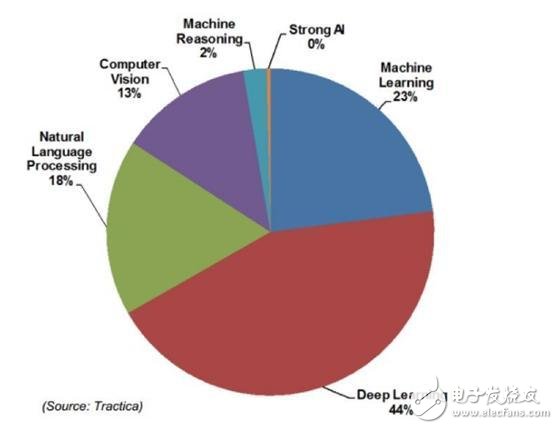
Data science is a broad discipline. AnalyTIcs data scientist (Type A) and Builder data scientist (Type B) are different. Type A Data Scientists can write good code when they encounter data correlation at work, but it does not have to be Experts, such data scientists may be specialized in experimental design, prediction, modeling, statistical inference or other statistical studies. But in general, the work output of data scientists is not as "p-values ​​and confidence intervals" as academic statistics sometimes suggest (as is sometimes the case in traditional drug statisticians). At Google, Type A Data Scientists usually refer to statisticians, quantitative analysts, decision support technical analysts, or data scientists, and possibly others.
Type B Data Scientists is building data. Class B and Class A have some of the same statistical background, but they are still better coders and may have specialized software engineering training. They are primarily interested in using data in products, and they build models that interact with users, usually by providing recommendations (products, people you might know, advertising movies, search results, etc.).
1. Machine learning vs deep learning
Before delving into the connection between machine learning and data science, here is a brief discussion of machine learning and deep learning. Machine learning is a set of algorithms that train data sets to make predictions or take action to optimize the system. For example, supervised classification algorithms are used to classify customers who want to make loans into good or bad prospects based on historical data. For a given task (such as supervised clustering), the required techniques are diverse: naive Bayes, SVM, neural nets, ensembles, association rules, decision trees, logistic regression, or a combination of many techniques. All of this is a subset of data science. When these algorithms are automated, such as drones or driverless cars, this is called AI, or a specific point, deep learning. If the data collected comes from the sensor and spreads over the Internet, then this is machine learning or data science or deep learning applied to the Internet of Things.
Some people have different definitions of deep learning. They believe that deep learning is a deeper neural network (a machine learning technique). AI (Artificial Intelligence) is a sub-area of ​​computer science that was created in the 1960s to solve tasks that are very easy for humans but difficult for computers. It is worth mentioning that the so-called strong AI may do all the things humans can do (possibly except for purely physical problems). This is quite extensive and includes a variety of things, such as planning, strolling around the world, recognizing objects and sounds, speaking, translating, socializing or commercial transactions, as well as creative work (such as writing poetry and painting). Wait.
NLP (Natural language processing) is only the part of the language that the AI ​​has to deal with, especially writing.
Machine learning is a situation where you give some AI problems that can be described in discrete form (such as choosing the right one from a series of actions), and then give a bunch of information about the outside world, without the need for a programmer. The "correct" behavior is selected in the case of a manual program. Usually, it is necessary to use some external process to judge whether the action is correct. Mathematically, this is the function: you give some input, and then you want him to process it to get the correct output, so the whole problem is simplified to build this mathematical function model in some automatic way. Different from AI: If I write a particularly wit program that has human behavior, then this can be AI, but unless its parameters are automatically learned from the data, it is not machine learning.
Deep learning is one of the most popular machine learnings of the moment. It contains a special mathematical model that can be thought of as a combination of simple blocks of a particular type (or a combination of functions of blocks) that can be adjusted to better predict the end result.
2. Data Science VS Machine Learning
Machine learning and statistics are all part of data science. The word learning in machine learning means an algorithm that relies on certain data and is used as a set of training patterns to adjust some model or algorithm parameters. This includes many techniques, such as regression, naive Bayes or supervised clustering. But not all technologies are suitable for this category. For example, unsupervised clustering—a method of statistical and data science—is designed to help classification algorithms without relying on any prior knowledge and training sets to monitor clustering or clustering structures. Someone needs to label the discovered clusters. Some techniques are mixed, such as semi-supervised classification. Some pattern detection or density assessment techniques are suitable for this classification.
However, data science is much larger than machine learning. “data†in data science may or may not come from machines or mechanical processes (the results may be manually collected, clinical trials require a special type of small data, etc.) and may be related to the “learning†mentioned above. There is no relationship at all. But the main difference is because data science actually covers the entire range of data processing, not just algorithms or statistics.
Encapsulated transformers are low frequency which covered in a thicker coating of insulation than typical. Often the coils are completely encased in epoxy or an epoxy and aggregate mixture. Sometimes they are referred to as [potted" or [cast coil".
The encapsulated design is especially suited for installations in harsh environments where dust, lint, moisture and corrosive contaminants are present. Typical applications include: pulp and paper plants; steel mills; food processing plants; breweries; mines; marine and shipboard installations.
Epoxy resin encapsulated safety isolating transformer PE series
Model: PE4809C-M Power: 0.5VA
This kind of transformer is PCB welding mounting type. The input can be 110V, 220V, 230V, 380V. Output is customized. Both single way and double way are available.
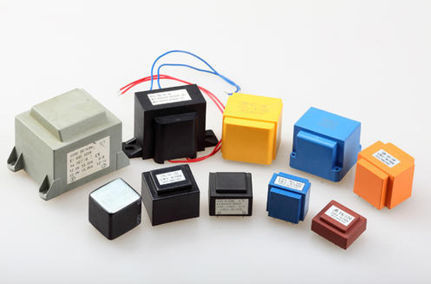

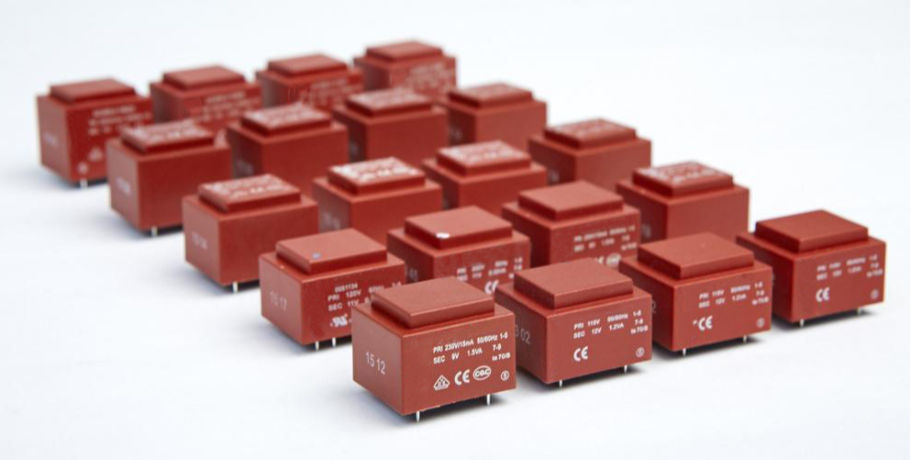
| Type |
Encapsulated Transformer |
| Primary Voltage |
230V |
| Secondary Voltage |
9V |
| Frequency |
50HZ/60HZ |
| Output type |
Single |
| Rated Power |
1.5VA |
| weihgt |
82g |
| Ambient Temperature | Ta70/B |
| Temperature class | Class B(130℃) |
| Coil Structure |
EI |
| Dimension H max | 22.3/24.4mm |
| Dielectric Strength | 230V 4200Vrms |
| Test |
100% |
| OEM & ODM | OEM/ODM |
| Certification |
VDE/CE |
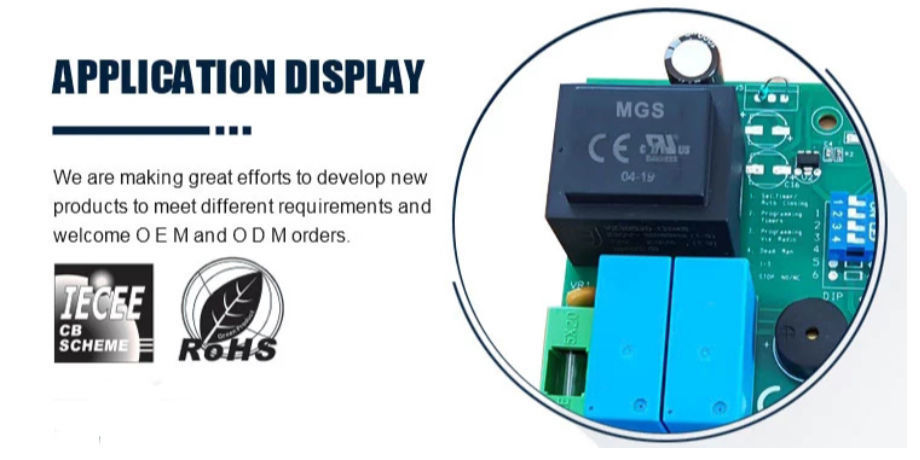
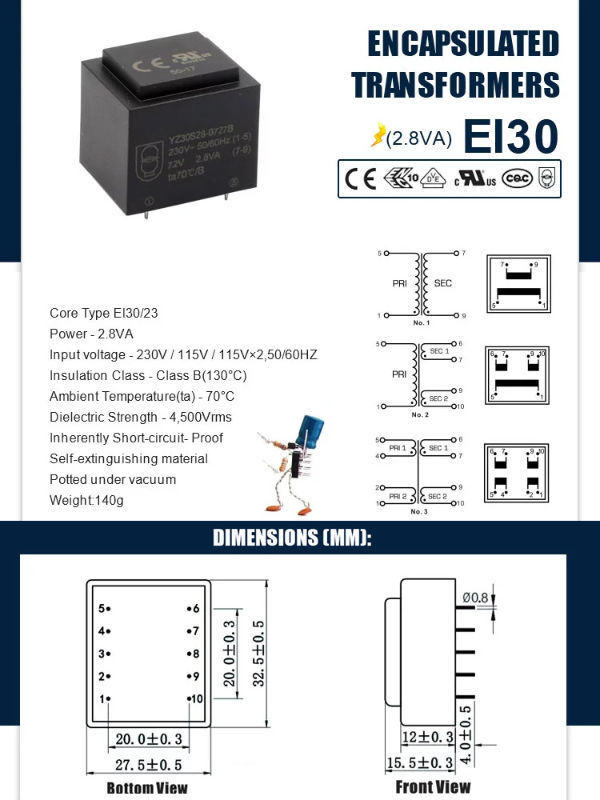


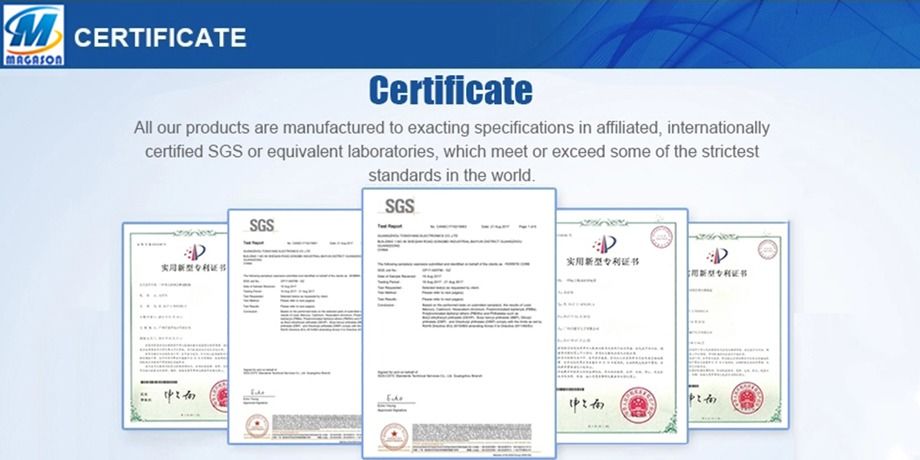
FAQ
1-MOQ?
We will work hard to fit your MOQ .Small purchase quantity is ok.
2-Payment term?
T/T, Western Union, Paypal, Credit Card
3-Delivery port?
Shenzhen, Guangzhou, Zhongshan, Hongkong.
4-Shipping date?
About 7 days when we check the payment.
5-Do you produce the core and bobbin by yourself
Yes.we have 2 head company,1 subsidiary company.one is bobbin factory,one is core factory,last one is transformer factory.
6-Where is your factory?
Shaanxi
Encapsulated Transformer,Step Down Transformer,Pcb Mount Transformer,Low Frequency Transformer
Shaanxi Magason-tech Electronics Co.,Ltd , https://www.magason-tech.com